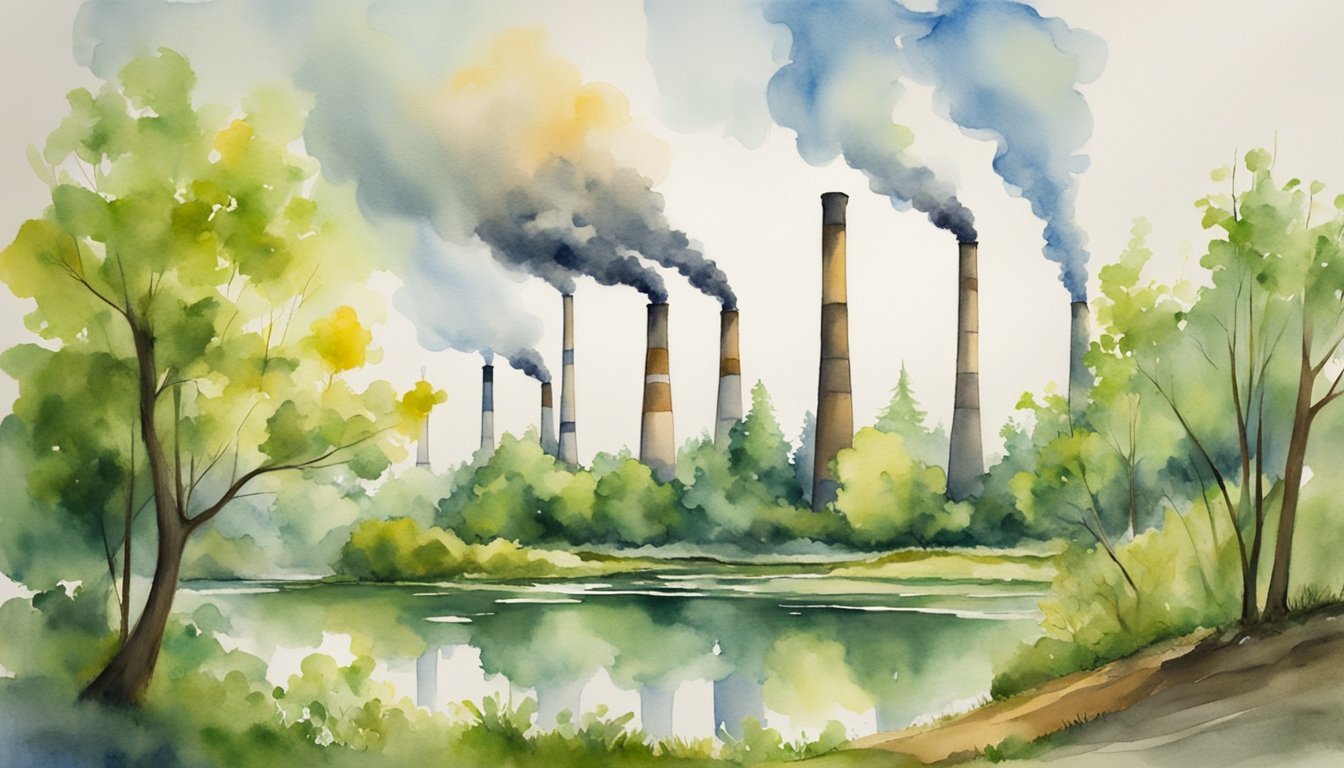Understanding Cap and Trade
Cap and trade is an environmental policy tool that aims to limit greenhouse gas emissions by assigning a cost to pollution, creating a balance between economic incentives and regulatory constraints.
The Basics of Cap-and-Trade Programs
Cap-and-trade programs start by setting an emissions cap which defines the total amount of greenhouse gases that can be emitted by entities covered by the system. This cap is typically reduced over time to decrease total pollution levels. Each entity, such as a power plant or manufacturing facility, is allocated emission allowances, which represent the right to emit a certain amount of greenhouse gases. These allowances can be traded on the emissions trading market, allowing companies that need to increase their emissions to buy allowances from those who have managed to reduce theirs.
The Role of Emissions Trading Markets
The emissions trading market, often referred to as an ETS (Emissions Trading System), functions as a platform for the buying and selling of emission allowances. This establishes a carbon price that reflects the cost of emitting one ton of carbon dioxide or the equivalent amount of another greenhouse gas. It incentivizes companies to invest in clean technologies and practices because if they emit less than their allowance, they can sell their excess capacity to others.
Regulatory Framework and Compliance
Compliance with a cap-and-trade system is regulated by governmental bodies which track the emissions of companies and enforce penalties for those that exceed their allowance without purchasing additional permits. The regulatory framework ensures that the emissions cap is maintained and that companies are motivated to stay within their emissions limits to avoid fines, creating a financial incentive to reduce overall emissions.
Cap and Trade Around the World
Cap and trade systems are being used in various regions around the world to combat climate change. The European Union has the most established system, which has been in operation since 2005. The United States has regional cap-and-trade programs like the one in California. China is developing a national cap-and-trade system after running pilot programs in several cities and provinces. Each region’s approach to cap and trade is tailored to their specific regulatory environments and climate policies.
Economic and Environmental Impacts

Cap and trade systems intertwine economic activity with environmental objectives, achieving emissions reduction through market-based incentives and pricing mechanisms. The balance of these elements influences both the effectiveness and the perception of cap-and-trade programs in various regions.
Market Dynamics and Prices
The heart of a cap-and-trade program lies in the creation of a market for trading emissions allowances. The government sets a cap on allowable emissions, which decreases over time. Companies are then granted or can purchase a certain number of tradable allowances via an auction or other allocation methods. As these allowances represent a decreasing volume of permitted emissions, the principle of supply and demand dictates their price. This price, known as a carbon price, reflects the cost of emitting a tonne of CO2 or equivalent gases. The flexibility afforded by allowance trading can lead to a more cost-effective way for companies to manage and reduce emissions compared to a traditional carbon tax.
Environmental Benefits and Challenges
The primary environmental goal of a cap-and-trade system is emissions reduction which, if well-designed, can contribute significantly to efforts against global warming. The Environmental Defense Fund outlines that cap-and-trade not only sets a hard cap on emissions but also enables the cap to become stricter over time, offering a compelling mechanism for reducing environmental pollution sustainably. However, challenges such as accurately reporting emissions, ensuring permit allocation methods don’t enable excess pollution, and averting the risk of carbon leakage (where a company might move operations to avoid cap-and-trade costs) must be addressed to realize these environmental benefits fully.
Economic Incentives and Innovations
By putting a price on carbon, cap-and-trade systems create an economic incentive for industries to invest in clean technologies and renewable energy, potentially fostering innovation. This market-based approach gives companies the flexibility to decide the most cost-effective strategy for reducing emissions—whether by improving energy efficiency, shifting to cleaner fuels, or purchasing additional allowances. The inherent economic incentive engenders a supportive environment for innovation, as businesses seek to minimize the cost of compliance while fulfilling environmental objectives.
Cap-and-Trade Programs in Action
Around the world, various cap-and-trade programs are in effect, each with tailored approaches to market dynamics and environmental goals. The Regional Greenhouse Gas Initiative (RGGI) is an example of a multi-state effort in the United States to reduce CO2 emissions from the power sector. By auctioning allowances and reinvesting the proceeds in energy efficiency and renewable energy, participating states have seen both emissions reductions and health benefits. Carbon pricing mechanisms like these are hailed for their potential to reduce emissions effectively while protecting human health, though the specific outcomes depend on detailed program design and implementation.

